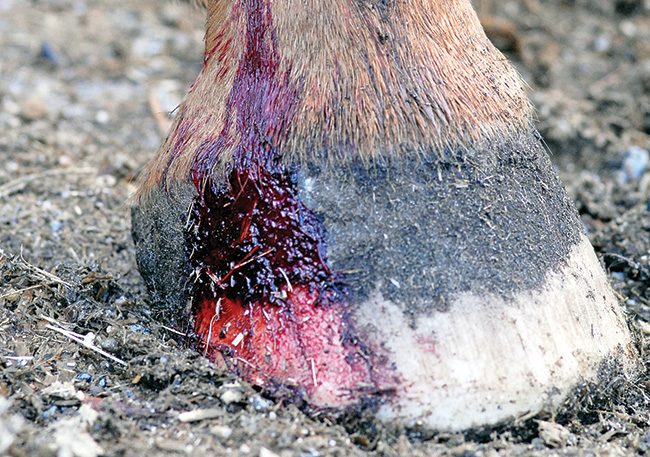American Farriers Journal
American Farriers Journal is the “hands-on” magazine for professional farriers, equine veterinarians and horse care product and service buyers.

Farriers are often the first ones called in by a horse owner when a horse has a wound on its foot or lower limb. It’s important to know how to inspect such injuries and know when to call in a veterinarian for help.
Often, horse owners call farriers first whenever there’s a problem with a horse’s foot. Farriers may find themselves being asked to do the first aid or wound assessment when a horse suffers a puncture, cut or some other injury to the hoof, coronary band or lower leg. There are some things the farrier can do for these injuries, as well as a few things that should not be done. And in certain cases the horse should be seen and treated by a veterinarian.
Julie Bullock, an equine veterinarian from Mt. Sidney, Va., says puncture wounds and other penetrating injuries often call for teamwork.
“This is often a situation where you need a team effort between the veterinarian and the farrier,” says the equine podiatrist. “I find that the farrier is often called first for many things. If the horse is lame, the owner tends to call the farrier.”
Bullock says that X-rays are often a necessity.
“Anything that penetrates the foot needs to be radiographed before it is removed,” says Bullock. “The veterinarian needs to be able to see how deep it went, and which tissues might be damaged. You need to know if it hits the bone, or went into the navicular bursa.
“In…